
GPS map vividly illustrates wolf territoriality
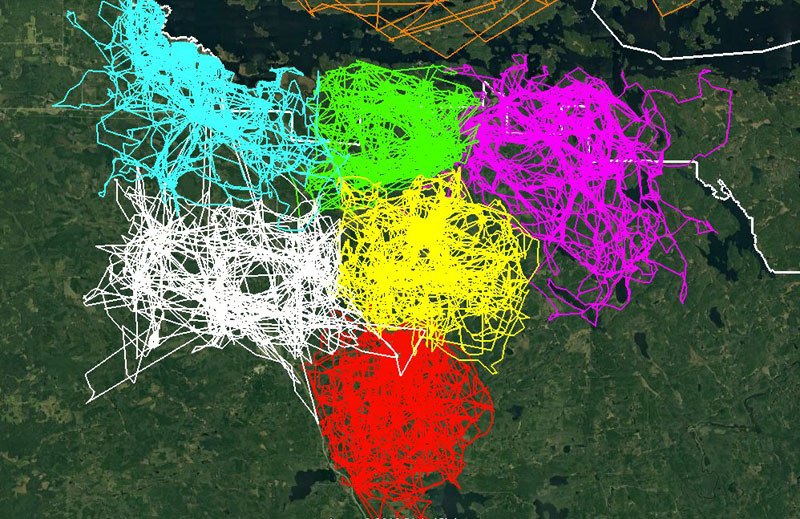
Here’s an interesting find by the guy who operates the Twisted Sifter blog . . .
In a recent post by the Voyageurs Wolf Project, they demonstrate how territorial wolf packs are through the mapping of 68,000 individual GPS locations from 7 wolves in different packs from the summer of 2018. They explain:
‘Each wolf’s collar took locations every 20 min (with the exception of the northernmost pack which took locations every 4 hr starting in October) for the duration of the summer. The last photo of the post shows the name and territory of each pack. There are a few packs that we have had collared in the past 2 years that we were not able to get GPS-collars on this year.’
‘This detailed GPS-data is incredibly valuable for understanding pack boundaries and also for our predation research. We visited every spot these wolves spent more than 20 minutes to determine if the wolves made a kill. This required an estimated 5,000 miles of hiking this past summer from our field crew!’
If you live in Montana, your neighbors are wolves, lions and bears

Here’s a reminder that bears aren’t the only critter you should not be baiting onto your property . . .
Jamie Jonkel couldn’t help but smile a couple of weeks ago when a report of a trio of mountain lions near a Florence school bus stop hit the news.
The longtime Montana Fish, Wildlife and Parks wildlife management specialist had seen it happen before.
“Those lions at Tie Chute were seen way at the upper end of the road,” Jonkel said. “It wasn’t near a bus stop. The man who made the report had just put his kids on the bus and he was on his way back home when he saw them.”
Chris Peterson: Thoughts on habitat
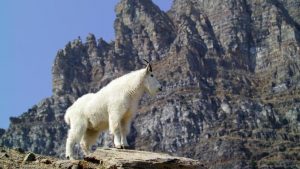
Hungry Horse News editor Chris Peterson has a well thought out editorial in this week’s paper . . .
I ask you this: Why is it that when I want to take a photo of a trophy-sized deer, elk, moose, bighorn of mountain goat, I go to Glacier National Park?
Glacier has a full suite of predators, big and small. It has wolves, mountain lions, black and grizzly bears, coyotes and lynx all roaming the landscape, gobbling up game, right?
Why if I was to listen to all the Fakebook experts there shouldn’t be hide nor hair of any game species in the Park. The wolves alone would have eaten them all up by now and what was left the bears would have scavenged, right?
Study shows mule deer do some serious traveling
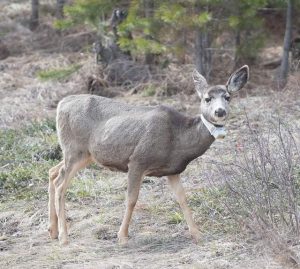
The ongoing mule deer study is turning up some interesting data . . .
Preliminary data from a 2-1/2-year long mule deer study is showing some interesting facets in the animals’ behavior and movement across the landscape in Northwest Montana.
Researchers from the University of Montana in cooperation with Montana Fish Wildlife and Parks, radio collared 44 mule deer on the Rocky Mountain Front near Augusta, 26 in the Fisher River drainage and 31 in the Whitefish range.
Currently, of those deer, 26 are still “on air” along the front, 21 near the Fisher and 19 in the Whitefish Range.
Annual Winter Speaker Series begins Jan. 28
Each year, the Winter Speaker Series covers some interesting topics . . .
The annual Winter Speaker Series, sponsored by Glacier National Park Volunteer Associates (GNPVA), has been a tradition in the Flathead Valley for decades, in which a guest speakers present subjects of interest related to Glacier Park on the fourth Monday of January, February and March.
The talks are free and open to the public.
The speaker on Jan. 28 is Brian Sommers, a criminal investigator with Montana Fish, Wildlife and Parks. Sommers, who has been a Montana game warden for 30 years, will give a presentation called “Stories From the Wildlife Human Attack Response Team” at 7 p.m. at the Museum at Central School in Kalispell.
On Feb. 25, Teagan Tomlin, an interpretive ranger in Glacier Park, will present “If Rocks Could Talk.” Tomlin will take listeners through the park’s geologic history and describe four major phases that helped shape the park’s scenery. Her presentation will help listeners interpret the physical appearance of rocks in the park and better understand how Montana has changed over the past 1.5 billion years. The presentation begins at 7 p.m. at the Museum at Central School.
On March 25, Adam Osborne, field manager for Dick Anderson Construction, and other supporting project members will discuss rebuilding Sperry Chalet. The presentation will include photos taken by Amy Boring during Phase 1 of the reconstruction project. The event begins at 7 p.m. at Flathead Valley Community College’s Arts and Technology Building in the Large Community Room (room 139).
For questions, call Teri at (406) 261-1840 or Mike at (406) 548-8949.
Managing wolves across a divided landscape
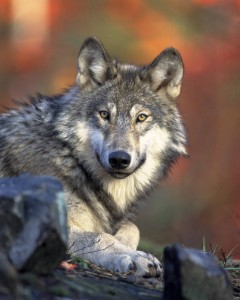
Here’s a good article on the wolf management difficulties faced by Montana Fish, Wildlife and Parks . . .
Wolves are complex critters that for centuries have inspired myths and legends while generating fierce controversies, an animal whose presence on the landscape is at once magical and maddening, captivating wildlife lovers while commanding condemnation from hunters who say the population of predators is decimating the bounty of big game in Montana.
Livestock producers living on the wild edges of wolf country have their own set of challenges, forced to keep constant vigil over calving pastures that serve as a veritable beef buffet for a pack of predators.
And wildlife managers with Montana Fish, Wildlife and Parks (FWP), the agency tasked with implementing regulatory mechanisms to manage wolves following delisting of the species from the Endangered Species Act in 2011, which granted the state full management authority of its wolf population, are caught in the middle, seeking to strike a delicate balance amid competing interests that remain bitterly divided.
North Fork Interlocal Agreement meeting on Feb. 20 (we hope)

The Winter 2019 Interlocal Meeting will be hosted by Flathead County. It is scheduled to be held at 10:00am on Wednesday, February 20 at the Flathead Forest headquarters building, 650 Wolfpack Way, Kalispell, MT 59901. (The Forest Service volunteered to supply meeting space.) The meeting usually lasts abut three hours.
Due to the government shutdown, please note that this schedule is *tentative*.
The Interlocal Agreement provides for face-to-face contact with representatives of agencies whose policies and actions affect the North Fork. Interlocal Agreement meetings are held in the winter (in town) and summer (at Sondreson Hall). Agency attendees include Montana Fish, Wildlife & Parks Montana Department of State Lands, U.S. Border Patrol, Glacier National Park, Flathead National Forest, U.S. Fish &Wildlife Service and Flathead County.
This is always a very interesting meeting, with reports from a range of government agencies and local organizations and often some quite vigorous discussion.
Last wild caribou in the contiguous U.S. no longer wild
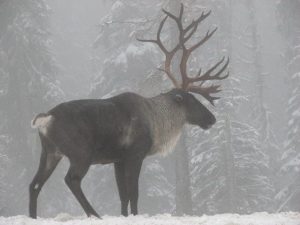
The Selkirks no longer have any mountain caribou on the U.S. side of the border . . .
The last mountain caribou to call the contiguous United States home made her exit from the wild, according to Science.
A team of biologists from British Columbia captured the female caribou in the Selkirk Mountains, just north of the United States-Canada border. They moved her to a captivity pen near the city of Revelstoke, where she will stay for at least a month, Science reports. It is believed that she is the only surviving member of the southernmost caribou herd, the final herd to spend its time on both sides of the border.
Canada’s caribou populations have been dwindling over the years as their habitats become increasingly threatened by those seeking the natural resources, including timber, gas, and oil, present there. Climate change has also been a major factor as it cripples food sources and creates irregular weather patterns, making it difficult for caribou to survive.
Noted FWP biologist Tim Thier retires
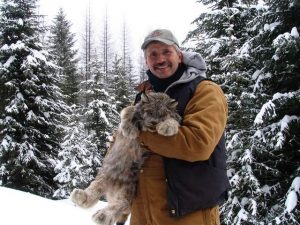
The end of an era . . .
Montana Fish, Wildlife and Parks Wildlife Biologist Tim Thier has had a distinguished career working with animals and birds in the western United States, but when he approached a impromptu checkpoint manned by Mexican Federal Police in Chihuahua while searching for grizzly bears nearly 40 years ago, he wasn’t sure how long, or if, that career would last.
Thier recently retired from the state agency, capping a 30-year career with it. But Thier’s career studying and working with wildlife dates back much further than that.
He first worked in Northwest Montana in 1976 with famed bear biologist Chuck Jonkel. Jonkel, who died nearly three years ago, was a pioneering bear biologist who spurred the careers of many who studied bears and other wildlife. Thier also worked with Chris Servheen of the U.S. Fish and Wildlife Service, the first grizzly bear recovery coordinator, who retired in 2016.